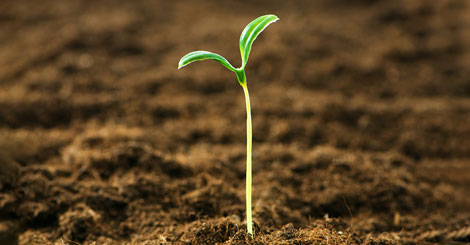
Although gardens are a bit behind this year due to cooler spring weather, most gardeners have finished the majority of planting of annual containers, flower beds and vegetable gardens.
Priorities start to shift, so now is the time to start pruning shrubs that are finished blooming and evergreens.
The only time a lilac should be pruned is immediately after flowering.
This shrub, as well as rhododendrons and azaleas, set flower buds on the end of new growth once blooms fade.
If these plants are pruned in the fall or spring, you are cutting off the flower buds! Never a good thing.
Most flowering shrubs can be tidied up after they finish blooming: Forsythia, Mockorange, Sandcherry, Spirea, Weigelia and Roses are a few examples.
Because of the late start this spring, you may have some plants that haven't flowered yet.
Just adjust your timing and prune once the flowers fade.
Some flowering shrubs are not pruned after blooming because they have an interesting berry, seed head or flower cluster that dries nicely on the plant.
Dogwoods and Viburnums have berries; Sumac and Ninebark have attractive seed clusters; some rose varieties have beautiful hips that will feed the birds in winter; Hydrangea flowers dry well, producing an interesting effect for the winter garden.
If possible, prune off each dead flower cluster with hand shears.
Cut on a slight outward angle right in front of a bud.
Try not to leave long pieces of stem ahead of buds.
These stem sections have to wither away and fall off before the pruning cut can heal properly.
If buds are positions in several directions along the stem, cut in front of an outward facing bud.
This directs new growth to the outside of the shrub rather in towards the centre.
Branches growing inwards will often tangle or cross each other and rub.
Branches that rub against each other will wear bark away, leaving an entrance for insect and disease to enter the stem.
Broadleaf evergreens such as Euonymus and Boxwood can be pruned now to shape the plant.
Remember the one third rule: cut back one third of this spring's growth to encourage a healthy, bushy plant.
Be sure to use sharp shears when shaping so the desired effect is achieved.
Dull pruning tools leave ragged cuts that turn brown and look messy.
This is also a good time to shape hedges.
The first flush of spring growth has finished.
Deciduous and evergreen hedges can be shaped right now and again around the end of July: Caragana, Alpine Currant, Honeysuckle, Cotoneaster, Privet, Boxwood, Cedar, and Yew.
Spruce and Pine hedges should only be pruned now and not again in midsummer.
Try to put a slight taper on the hedge so that the bottom is wider than the top.
This shape allows sunlight to reach all parts of the hedge.
If the top is wider than the bottom, the lower foliage gets too much shade and often dies away.
You are left with a hedge with a bare bottom!
Hopefully you pruned all your pines already.
The perfect pruning time for them is when the new growth resembles a candle; before the needles open up.
If you missed pruning your pines at that stage, do it right away.
There will still be time for the plant to produce buds at the end of the new growth.
Pines are another plant group that are not pruned fall or spring.
They only have buds at the terminal end of the new growth.
As mentioned above, now is the time to prune other evergreens: cedar, yew, spruce and hemlock.
Unless these plants are forming a hedge, try to avoid cutting the main leader.
You want one main shoot growing tall and straight.
If you have maples that need some pruning, do it now.
They are one of the groups not pruned in spring as that is the time that sap is running.
As well as now being the time for pruning, you need to monitor your gardens carefully for insect and disease problems.
Catching problems early can save your plants a lot of trouble.
I will give you a pest and disease update in next week's article.